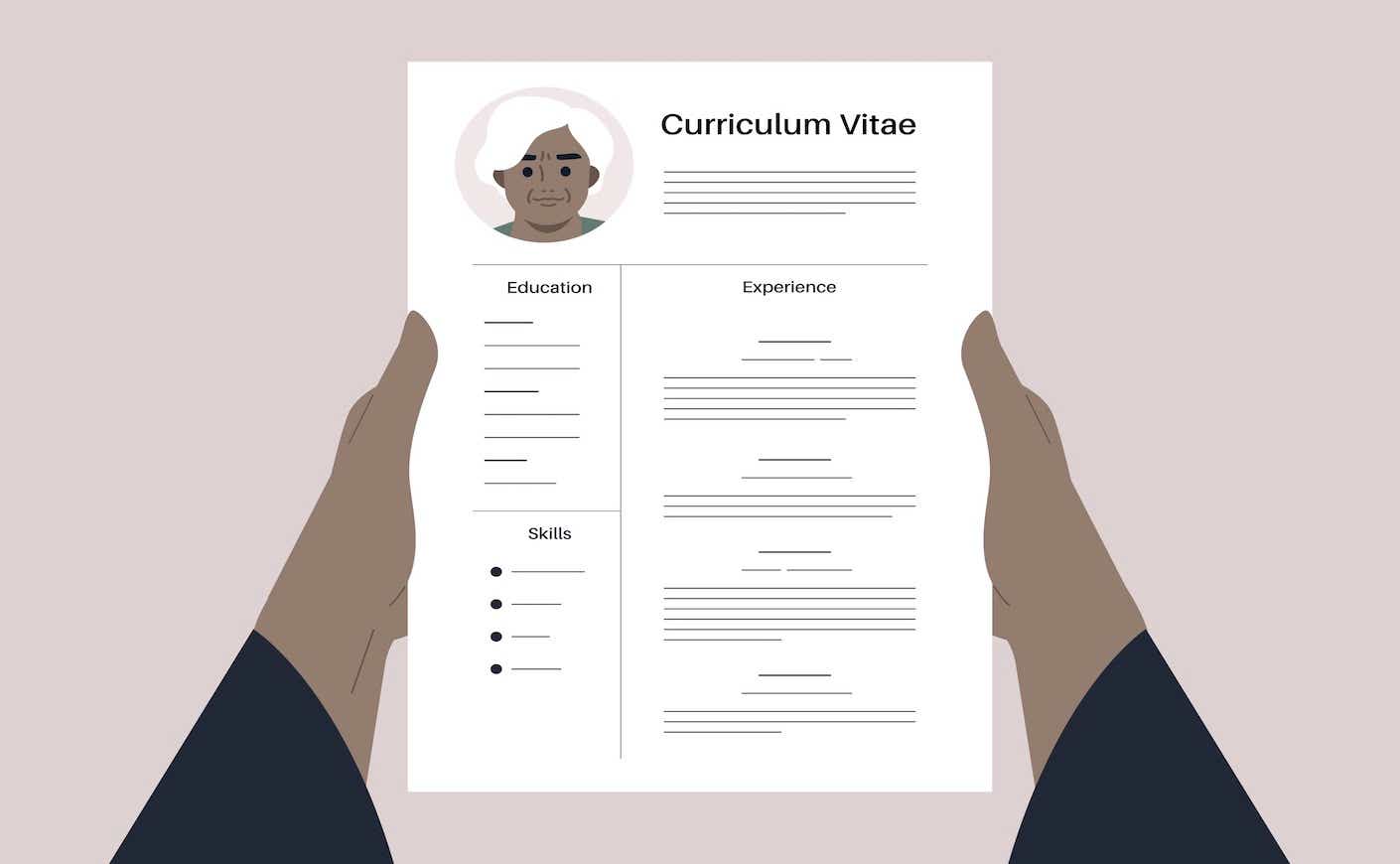Is Your Office Ageist? How to Spot Age Discrimination at Work and What to Do About It
Overcoming Ageism in the Job Market: Tips for Older Job Seekers Katie Couric Media


Sustainable Development Goals (SDGs) and Age Discrimination in the Workplace

A whopping 38 percent of hiring managers admitted to reviewing resumes with an ageist slant, per a new survey.
Introduction
Ageism is often called the “last acceptable bias,” and at least in corporate America, that’s certainly the case. According to a 2021 AARP survey, 78 percent of older workers say they’ve seen or experienced age discrimination at the office, the highest level since the organization began tracking it in 2003. More seasoned employees are often disparaged, thought to be unambitious or slow to learn new skills — and that’s just simply not the case, says Janine Vanderburg, who leads the anti-ageism nonprofit, Changing the Narrative.
But the bias persists in the workplace. Sometimes it’s blatant, like when managers spout off about “needing new blood,” she says. More often, it’s a bit more subtle, though damaging all the same, Vanderburg says. Whether you’ve been at the same company for years or are on the hunt for a new gig, there are steps you can take to protect yourself.
What is age discrimination?
According to the Equality and Human Rights Commission, age discrimination “is when you are treated differently because of your age in one of the situations that are covered by the Equality Act.” As it pertains to the workplace, the Equal Employment Opportunity Commission says age discrimination “involves treating an applicant or employee less favorably because of his or her age.” Discrimination can occur when the victim and the person who inflicted the discrimination are both over 40.
What are examples of age discrimination at work?
It can manifest in many different ways, says Ashton Applewhite, an anti-ageism advocate and author of This Chair Rocks. “Maybe you’re not being offered training opportunities, you’re not being invited to social events — or the social events are all beer pong — or you’re being passed over for promotions,” she says.
You might be left out of meetings or not given the challenging assignments you used to be first in line for, Vanderburg says. Or maybe you continue to deliver strong results and have a history of glowing reviews, when all of a sudden, your evaluations begin to tank. Perhaps higher-ups start talking about needing more millennials around to attract a younger clientele — aka “We need to get the older people out of here,” Vanderburg says.
When it comes to ageism, there are definitely bad actors out there. (Consider the IBM execs caught referring to their older employees in emails as “dinobabies,” a “new species” they hoped to make “extinct” at the tech company.) But even when ageism isn’t so overt, the bias is implicit because we live in a society that venerates youth, Vanderburg says. She’s often invited to speak at organizations looking to diversify and add more graying workers to their ranks, and often hears from higher-ups who are shocked by the unintentionally hostile environment they’ve cultivated.
“If you have job announcements with photos of only people in their twenties and you’re putting in language that says you’re looking for ‘digital natives,’ you’re sending a message,” she says. “So many people are surprised when they hear that. I think there’s simply a lack of awareness in many cases.”
In the U.S., people 40 and older are protected from age-related discrimination in hiring, promotion, termination, and harassment. That’s great in theory, but hard to enforce in practice, Applewhite says. Since 2009, when a Supreme Court ruling raised the legal standard for proving age discrimination, lawsuits have become more rare — and successful suits even rarer.
Federal lawmakers are trying to level the playing field with a new bill, while some states, like Colorado, have moved to protect older jobseekers by banning employers from asking applicants how old they are during the hiring process. But experts say there’s still a long way to go when it comes to rooting out ageism in offices.
How to find an “age-friendly” employer
In a survey that came out just last year, an astounding 38 percent of hiring managers admitted that they’ve reviewed resumes with an ageist slant; four in five said they have concerns about hiring both older and younger applicants. The fact is that if you’re looking for work in your 60s and 70s, the cards are stacked against you — but there are plenty of things you can do to improve your odds, says Chris Farrell, author of Unretirement: How Baby Boomers Are Changing the Way We Think About Work, Community, and the Good Life.
The first step is finding “age-friendly employers,” Vanderburg says. A good place to start is the AARP, which has since 2012 asked companies to sign a pledge agreeing to give workers over 50 a fair shot in the hiring process. Today more than 1,000 businesses have joined the program, including CVS and Bank of America.
There are a few other ways to identify a welcoming employer. Look for companies that already have a multi-generational workforce — and who don’t ask for graduation dates in the hiring process or use phrases like “digital native” or “high energy” in job descriptions, Vanderburg says. They may also offer pre-retirement plans that help workers scale back when the time comes, or encourage two-way mentoring, so older workers can share their experience and learn from a younger colleague. Another thing to keep an eye out for is an organization’s diversity, equity, and inclusion (DEI) policy, Applewhite says, because the ones that embrace older workers won’t just consider gender or race, but age as well. “It’s blindingly obvious that age is a criterion for diversity, and more and more it’s being seen as part of DEI,” she says.
How to fight ageism as an employee and job applicant
To preempt age discrimination, it’s very helpful to prove you haven’t “retired in place.” That means being engaged, volunteering for projects, staying up to date on the latest tech in your field, and demonstrating that you want to learn. It isn’t fair, but the “old dogs, new tricks” bias is still out there, so it’s crucial that you show you’re eager to grow and master new skills, says career coach Dori Gillam.
If you do feel like you’re being victimized, the next step is to thoroughly document any instances of ageism and take that log to your H.R. department. If they’re unresponsive and things don’t change, you could file
SDGs, Targets, and Indicators Related to Age Discrimination in the Workplace
1. Which SDGs are addressed or connected to the issues highlighted in the article?
- SDG 8: Decent Work and Economic Growth
- SDG 10: Reduced Inequalities
- SDG 16: Peace, Justice, and Strong Institutions
2. What specific targets under those SDGs can be identified based on the article’s content?
- SDG 8.5: By 2030, achieve full and productive employment and decent work for all women and men, including for young people and persons with disabilities, and equal pay for work of equal value.
- SDG 10.3: Ensure equal opportunity and reduce inequalities of outcome, including by eliminating discriminatory laws, policies, and practices and promoting appropriate legislation, policies, and action in this regard.
- SDG 16.5: Substantially reduce corruption and bribery in all their forms.
3. Are there any indicators mentioned or implied in the article that can be used to measure progress towards the identified targets?
Yes, the article mentions indicators that can be used to measure progress towards the identified targets:
For SDG 8.5:
- Percentage of older workers who have seen or experienced age discrimination at the office (mentioned in the article)
- Percentage of companies that have signed a pledge to give workers over 50 a fair shot in the hiring process (mentioned in the article)
For SDG 10.3:
- Percentage of hiring managers who admit to reviewing resumes with an ageist slant (mentioned in the article)
- Percentage of companies that have diversity, equity, and inclusion (DEI) policies that consider age as a criterion for diversity (mentioned in the article)
For SDG 16.5:
- Number of age discrimination complaints filed with the Equal Employment Opportunity Commission (mentioned in the article)
- Number of successful age discrimination lawsuits (mentioned in the article)
Table: SDGs, Targets, and Indicators
| SDGs | Targets | Indicators |
|---|---|---|
| SDG 8: Decent Work and Economic Growth | SDG 8.5: By 2030, achieve full and productive employment and decent work for all women and men, including for young people and persons with disabilities, and equal pay for work of equal value. |
|
| SDG 10: Reduced Inequalities | SDG 10.3: Ensure equal opportunity and reduce inequalities of outcome, including by eliminating discriminatory laws, policies, and practices and promoting appropriate legislation, policies, and action in this regard. |
|
| SDG 16: Peace, Justice, and Strong Institutions | SDG 16.5: Substantially reduce corruption and bribery in all their forms. |
|
Behold! This splendid article springs forth from the wellspring of knowledge, shaped by a wondrous proprietary AI technology that delved into a vast ocean of data, illuminating the path towards the Sustainable Development Goals. Remember that all rights are reserved by SDG Investors LLC, empowering us to champion progress together.
Source: katiecouric.com

Join us, as fellow seekers of change, on a transformative journey at https://sdgtalks.ai/welcome, where you can become a member and actively contribute to shaping a brighter future.







